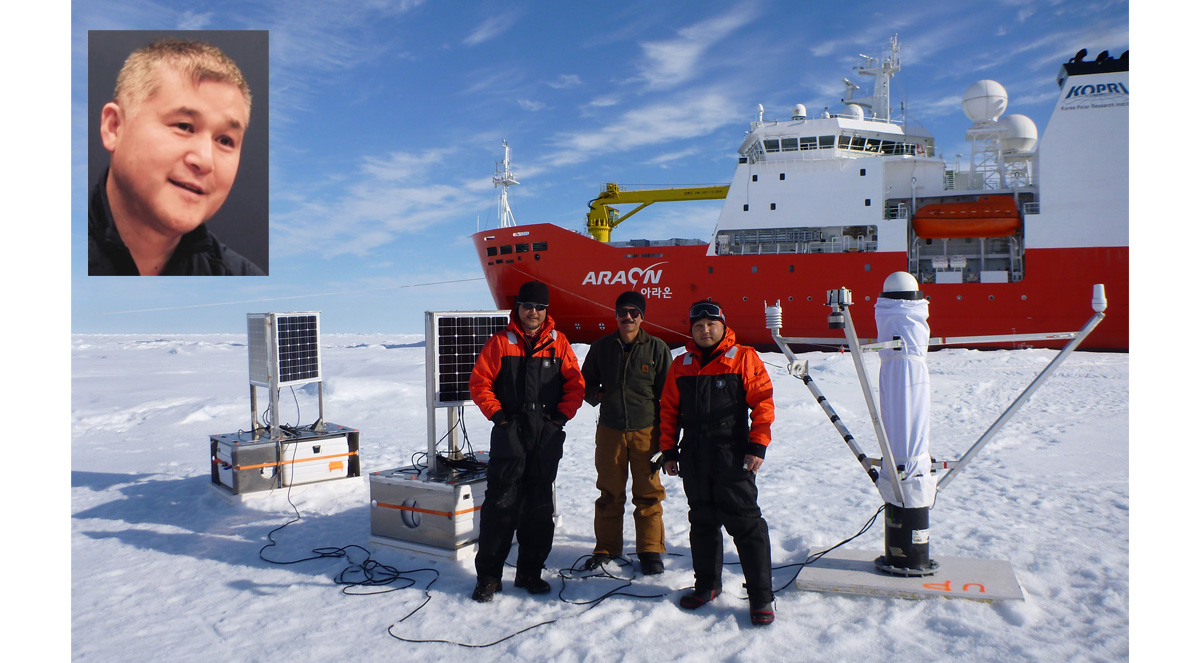The hole is not expected to harm humans unless it extends further south
A UNIVERSITY of Huddersfield scientist is scheduled to head back to the Arctic, where he is an experienced researcher of changes in its ice fields and their impact on climate change.
But as he prepares to return to the region, Dr Byongjun (Phil) Hwang has been absorbing news of a fresh development – a rare, unusually large hole in the ozone layer has been observed in the stratosphere above the North Pole.
“It is not directly relevant to my work, but could maybe have an indirect impact,” said Dr Hwang, who is a geophysicist specialising in the dynamics of snow and ice in the Arctic.
Study Geography at Huddersfield
He has already paid some 15 visits to the region, and the latest is due to be a July-to-September stint aboard the research vessel Polarstern. He leads a work package that is part of the multi-national project named MOSAiC – standing for Multidisciplinary drifting Observatory for the Study of Arctic Climate.
Dr Hwang will use sea ice buoys equipped with special sensors to gain a greater understanding on seasonal ice floes, and this will in turn help to create better models to understand and predict climate change.
The new dimension to Polar research came when scientists using data from the European Space Agency’s Copernicus Sentinel-5P satellite noticed a strong reduction of ozone concentrations over the Arctic.
“Unusual atmospheric conditions, including freezing temperatures in the stratosphere, have led ozone levels to plummet, causing a ‘mini-hole’ in the ozone layer,” stated the official announcement from the Agency.
The ozone layer is a natural, protective layer of gas in the stratosphere that shields life from the Sun’s harmful ultraviolet radiation. Normally, the “ozone hole” that causes most concern is usually the one situated over Antarctica, forming each year during autumn.
There have in the past been mini ozone holes spotted over the North Pole, but the depletion over the Arctic this year is much larger compared to previous years.
It is being caused by a cooling down in the stratosphere above the Arctic, said Dr Hwang. It is not fully clear why this is happening, he added, although there is a range of theories. One is that as the temperature of the sea in the North Pacific warms up, this actually has the effect of creating a cooling in the stratosphere in the Arctic.
“Another theory is that when the ozone depletes this actually promotes cooling in the upper atmosphere because the ozone absorbs a lot of sunlight, so the less ozone the more cooling down.”

Scientists expect that that the Arctic ozone hole will soon close again and, continued Dr Hwang, factors such as the reduction in the use of chlorofluorocarbons (CFCs) probably mean that well before the end of the century the ozone layer will have fully recovered.
Meanwhile, his plan is to fly to Norway in July and then, travel aboard an icebreaker, to the research vessel Polarstern. The Polarstern has been deliberately frozen into the Arctic ice and allowed to drift, thus enabling the scientists to undertake their research.
The Covid-19 crisis has inevitably had an effect on the project, and Dr Hwang will need to undergo a medical examination – currently difficult to procure in the UK – before he travels. However, he is still optimistic that his research can go ahead on schedule.
Gardening? Then spare a thought for insects
The tiniest creatures on the planet are vital to its environment … so always look on the small side of life
Tsunami research wins Newton Prizes
The work will benefit at risk areas of coastal Indonesia through the introduction of new advanced warning and preparedness measures
Clean water project for Pakistan’s poor
Dr Muhammad Usman Ghori will be working with Pakistani officials to bring clean, affordable drinking water to the people of South Punjab

